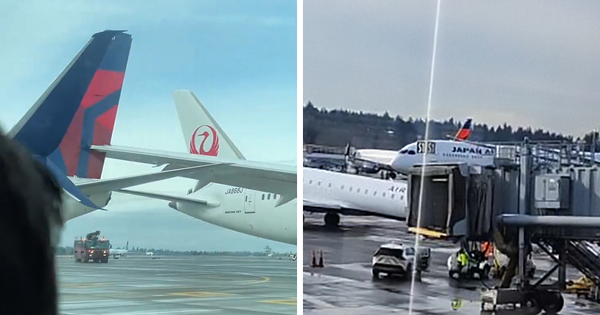
Keep an ear out for the various experts who a little while ago were
demanding/forecasting harder and faster interest rate hikes by the
Reserve Bank. I suspect they might be going a little quiet.
For example, Westpac’s forecast a month ago that the RBA’s cash rate would be 3.35 per cent in February is starting to fit the “brave decision, Minister” category.
There are too many wheels spinning in different directions to be
confident that our central bank will remain hairy-chested about lifting
rates beyond a “neutral” 2.5 per cent cash rate.
The latest contribution to confusion about the economy comes from the S&P Global Australian PMI (Purchasing Managers Index) which on Tuesday pointed to Australian business activity falling into contractionary territory this month.
The PMI is derived from a survey of 800 Australian service and
manufacturing businesses.
No survey is perfect, but this one is pretty good at showing how the private sector is travelling, as borne out by subsequent GDP figures. A reading above 50 suggests activity is expanding, below 50 means it is contracting.
The manufacturing PMI is still positive at 54.5 – but that is the lowest it has been in 12 months, and our services sector is much bigger, dominating the composite index.

The services PMI fell to a seven-month low of 49.6 in August. Photo: Getty
Thus, the services PMI falling to a seven-month low of 49.6 in August
was enough to take the overall index to 49.8.
Coming on top of consumer sentiment turning decidedly negative and the latest wages price index proving to be a weak water pistol rather than a smoking gun for the wages inflation story, the PMI is a strong addition to the reasons for the RBA to tread carefully.
A delicate balance
The jobs and skills summit next week (September 1-2) will hear a lot of claims about how the economy is travelling and what needs to be immediately done about immigration, but plenty of those claims will be made by vested interests that won’t want to acknowledge how delicately poised the economy is at present.
The Commonwealth Bank’s economics team – which is in the less
hawkish cash rate camp – reckons the PMI data supports its call.
“We see the cash rate target peaking at 2.60 per cent in late 2022 (a
level which we consider to be contractionary),” said the CBA.
The bank with the biggest exposure to Australian consumers and
housing is pencilling in the RBA will cut rates by 50 points in the second half of next year – which also might be a “brave” call.
“We think that provided the RBA pause in their tightening cycle when the cash rate is about 2.60 per cent (close to the 2.5 per cent level the RBA have nominated as their estimate of neutral, which is about 100 basis points above our assessment of neutral) the data will indicate that there is no need to continue to take the policy rate higher.
“Indeed taking the cash rate higher would likely generate a hard landing in the economy,” the CBA concluded.
Nobody wants a “hard landing”, alias a recession. It’s wise to be wary of anyone who tries to tell you they know exactly what’s happening with our economy and what “they” (government/RBA/business) should be doing right now. As we steadily discover more about what’s going on behind the usual headlines though, the CBA’s case is looking more likely than Westpac’s.

Next week’s summit concentrating on wages and labour force issues will be dealing with lagging indicators – and we’re still learning about them.
For example, Peter Martin made a valuable contribution in The
Conversation explaining why the new ‘floor’ under our unemployment rate is lower than what we have been used to – there has been an important and most welcome reduction in long-term unemployment.
Mr Martin wrote that the fall in the number of long-term unemployed from 218,200 to 130,100 in the year to June was more important than the fall in the total number of unemployed from 682,400 to 493,900.
The long-term unemployed are those who have been out of work for a year or more.
Pushed to back of the queue
“Each person who loses their job or who is unable to get a first job when unemployment shoots up can lose confidence and up-to-date work experience,” Mr Martin said.
“Then, as things improve and employers begin hiring again, people who have been out of work for longer get pushed back in the queue. Employers find it safer to take on new graduates or people with more recent experience.
“The more those who were unlucky during a crisis get pushed to the
back of the queue, the less employable they seem – and the less
employable they become,” he said.
The present shortage of labour has forced employers to hire people they previously would have passed over.
“It means we’ve bought ourselves long-lasting lower unemployment,
whatever happens from here on. It also means the best part of 100,000 lives have been transformed. It means the best part of 100,000 people no longer face years on JobSeeker.
“And it means we’ve discovered something really useful. Just as a crisis that renders people near unemployable can lift the floor under unemployment for years to come, a crisis that forces employers to take on people rendered near unemployable can cut it, perhaps for a very long time.”
It means economic commentators don’t have to be as scared of a low
unemployment rate causing inflation. Particularly when inflation hasn’t had much to do with the level of wage rises. As has been noted many times already, Australian interest rates have no impact on floods, Putin and supply chain issues.
On top of that, Ross Gittins in the Nine newspapers on Monday nicely
explained how botched government housing policy is responsible for a large whack of the CPI rise.
More importantly, the higher costs of building a new house don’t matter to most people – it’s not the “cost of living” most feel.
It’s a time to tread very carefully on a number of fronts.
It would be a tragedy if, with the benefit of hindsight at some point in the future, the RBA was judged to have been too slow to start normalising rates and then went too far in raising them.







